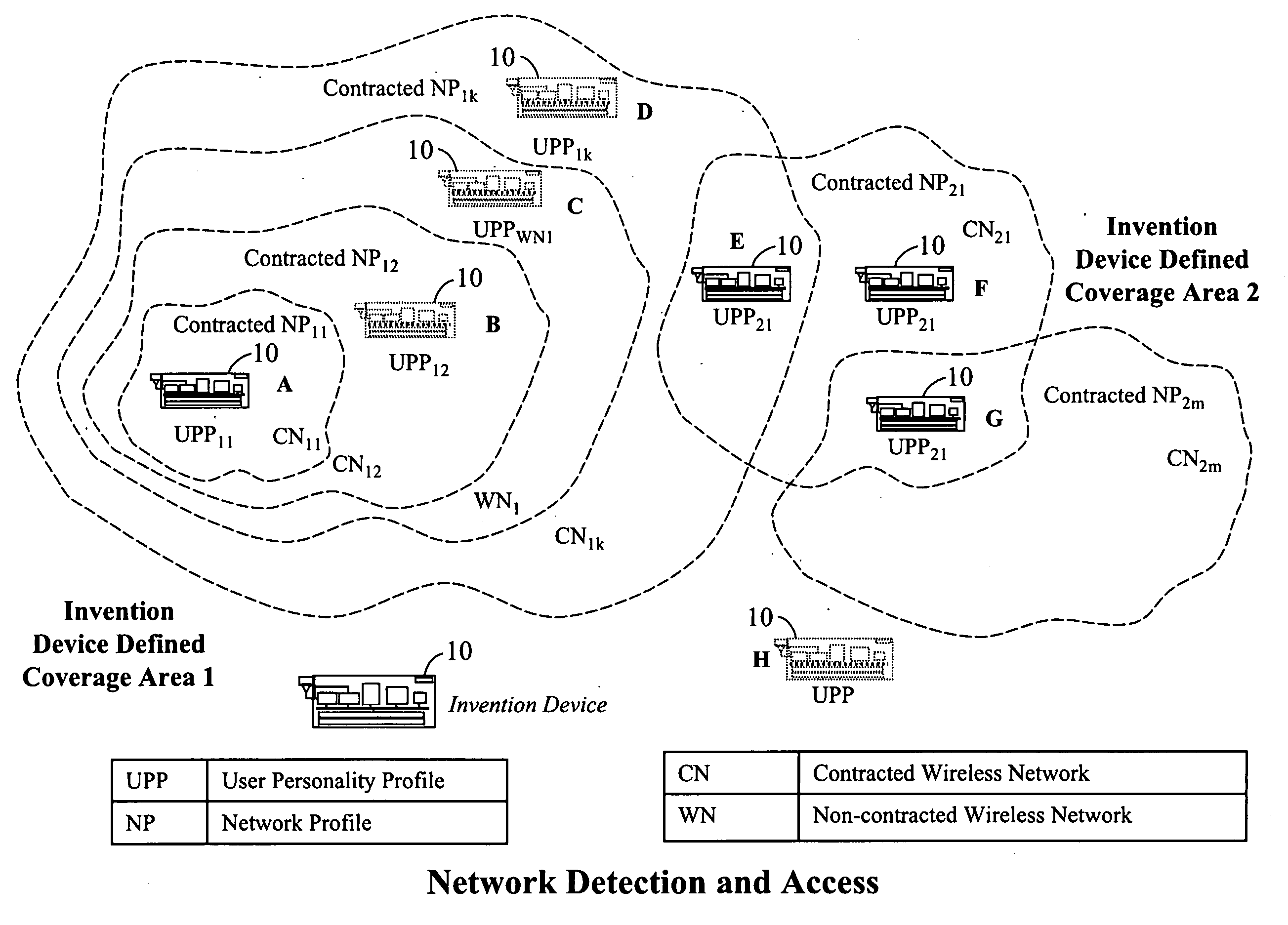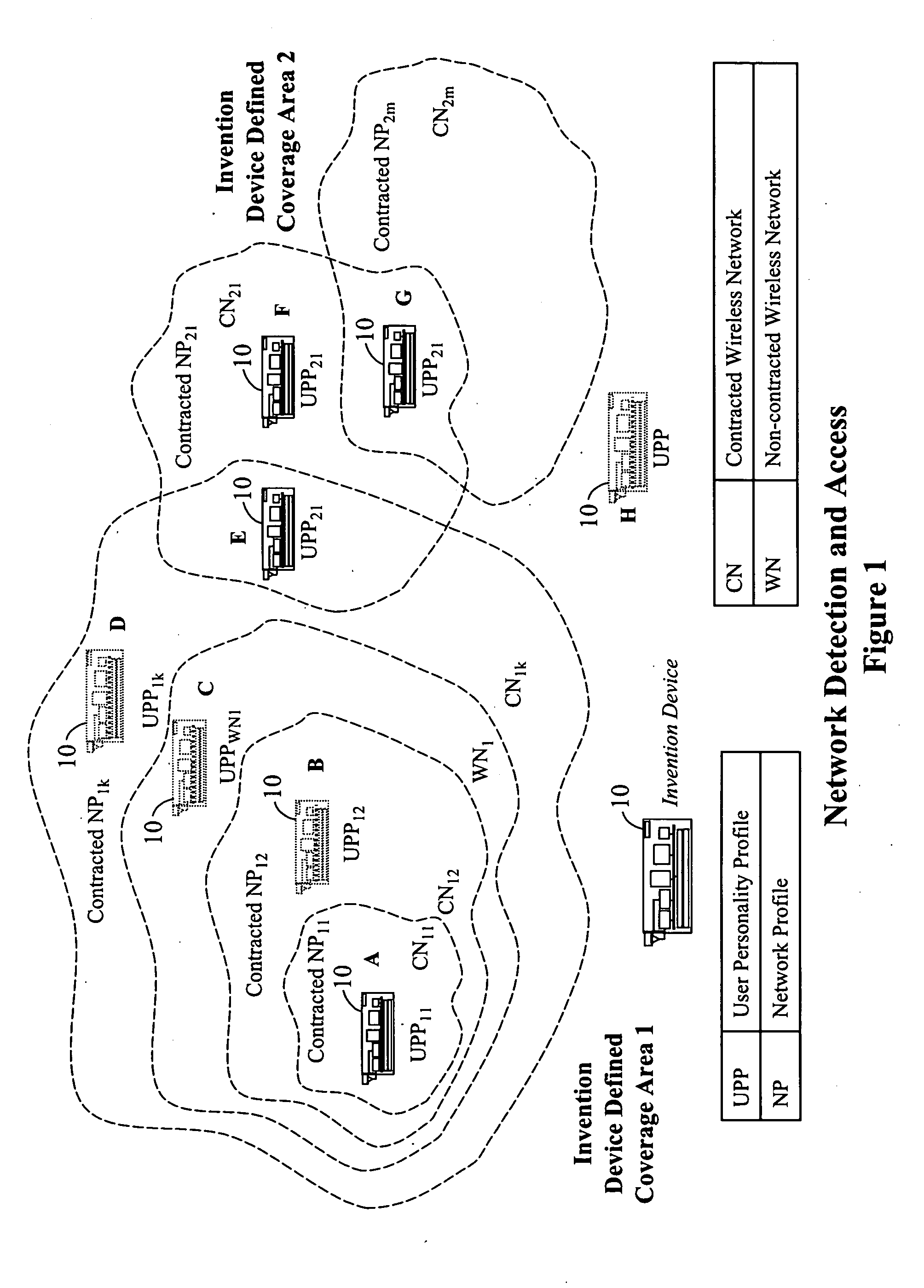Advanced multi-network client device for wideband multimedia access to private and public wireless networks
a multi-network client and wireless network technology, applied in the field of advanced multi-network client devices for wideband multimedia access to private and public wireless networks, can solve the problems of limited access to the full features and services of the wireless network, limited technology to base station (bs) or access point (ap) applications, and high cost per-subscriber, so as to maximize flexibility in communicating with various networks, support access, and the effect of flexible and robus
- Summary
- Abstract
- Description
- Claims
- Application Information
AI Technical Summary
Benefits of technology
Problems solved by technology
Method used
Image
Examples
Embodiment Construction
[0050]Referring to FIG. 1, a wireless device 10 in accordance with the invention provides a platform for data, voice and multimedia applications in a single unit which can operate seamlessly across multiple networks that operate with different wireless protocols. Device 10 may take various forms. For example, it may be a computer that has a wireless connection, an advanced type of wireless telephone, etc. Device 10 is provided with SDR capability to enable it to work with any network, not just GSM but also CDMA, TDMA, 802.11x and any other wideband wireless technologies or CAI protocols. Broadband High Speed Internet Access is also available through the device.
[0051]The inventive device 10 can communicate with multiple wireless networks as shown in FIG. 1. In the example of FIG. 10, there are a series of overlapping wireless networks, CN1, CN2, WN and CNk, where CN refers to a “Contracted Network”. A user of the wireless device 10 contracts with one or more of the “contracted networ...
PUM
 Login to View More
Login to View More Abstract
Description
Claims
Application Information
 Login to View More
Login to View More - R&D
- Intellectual Property
- Life Sciences
- Materials
- Tech Scout
- Unparalleled Data Quality
- Higher Quality Content
- 60% Fewer Hallucinations
Browse by: Latest US Patents, China's latest patents, Technical Efficacy Thesaurus, Application Domain, Technology Topic, Popular Technical Reports.
© 2025 PatSnap. All rights reserved.Legal|Privacy policy|Modern Slavery Act Transparency Statement|Sitemap|About US| Contact US: help@patsnap.com



